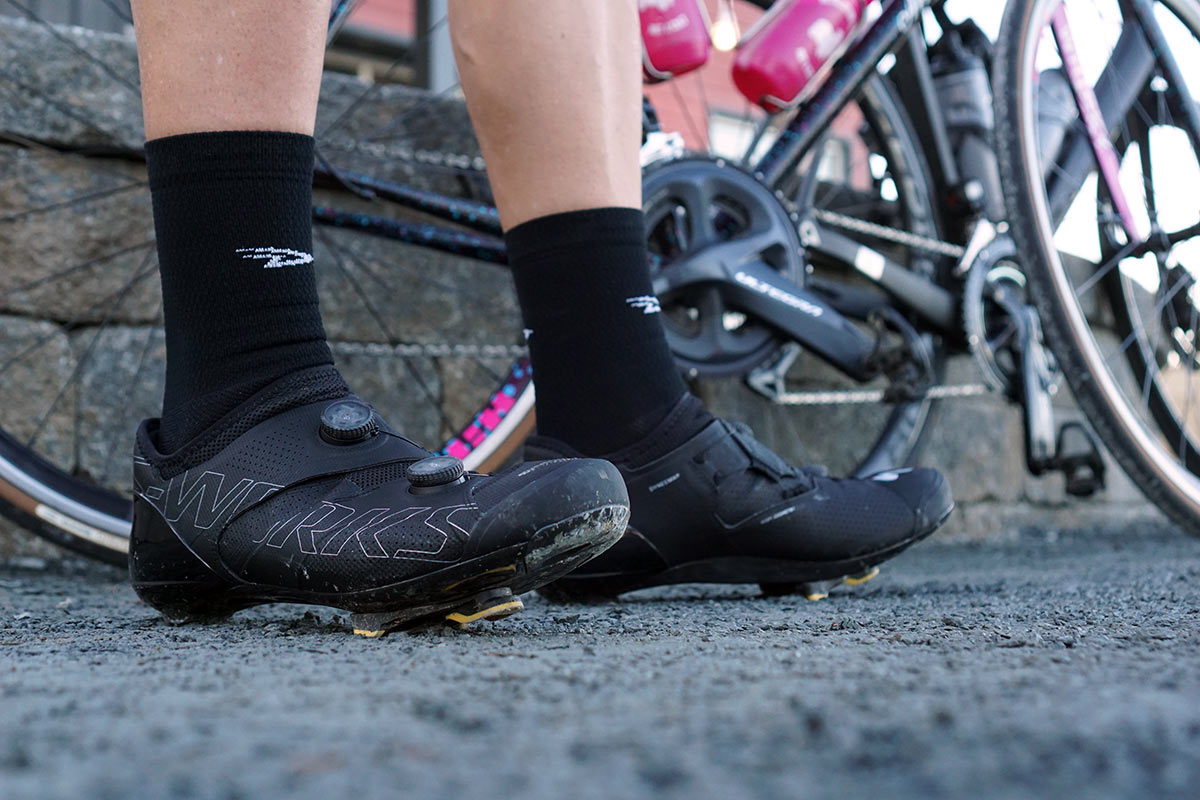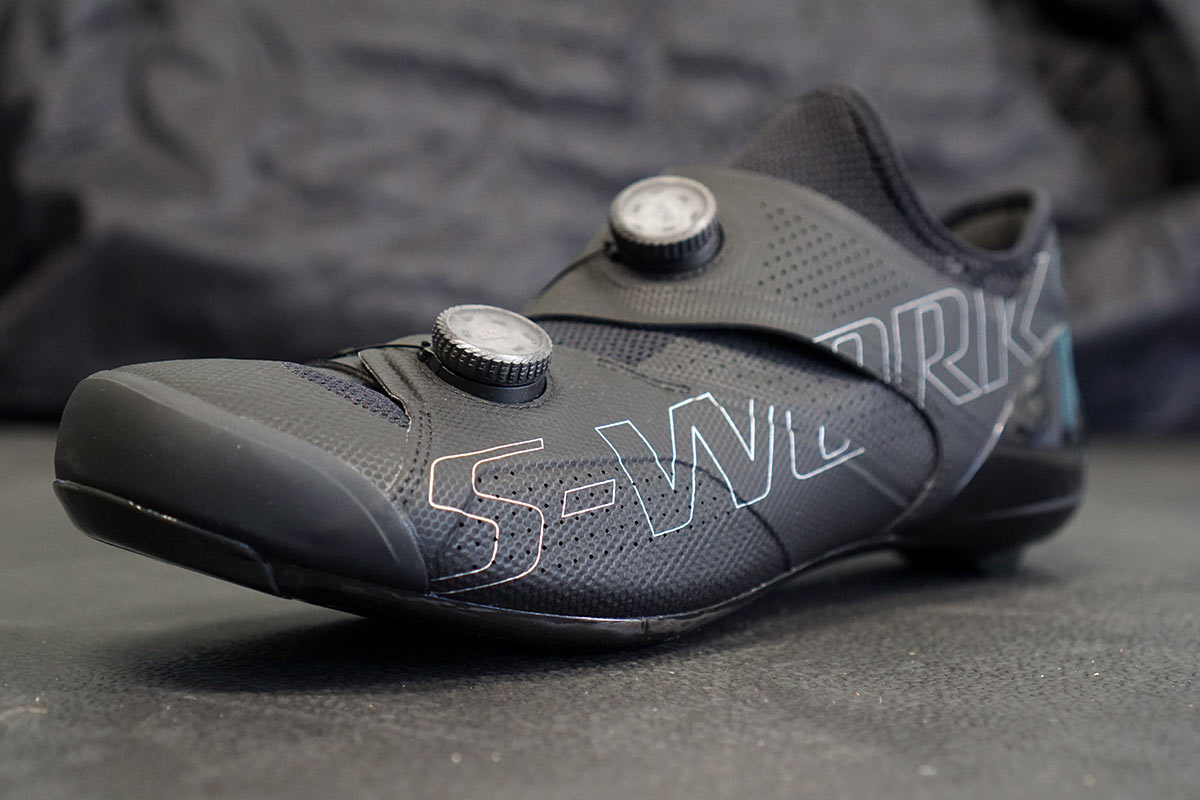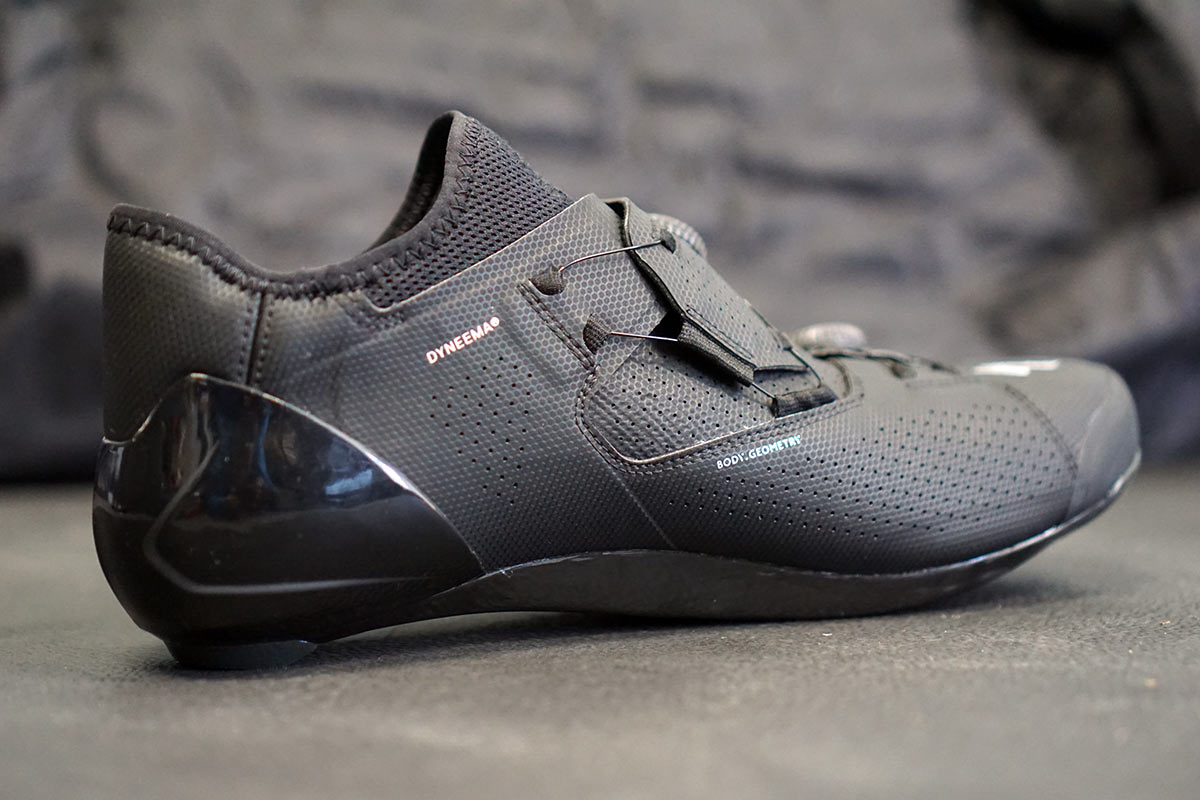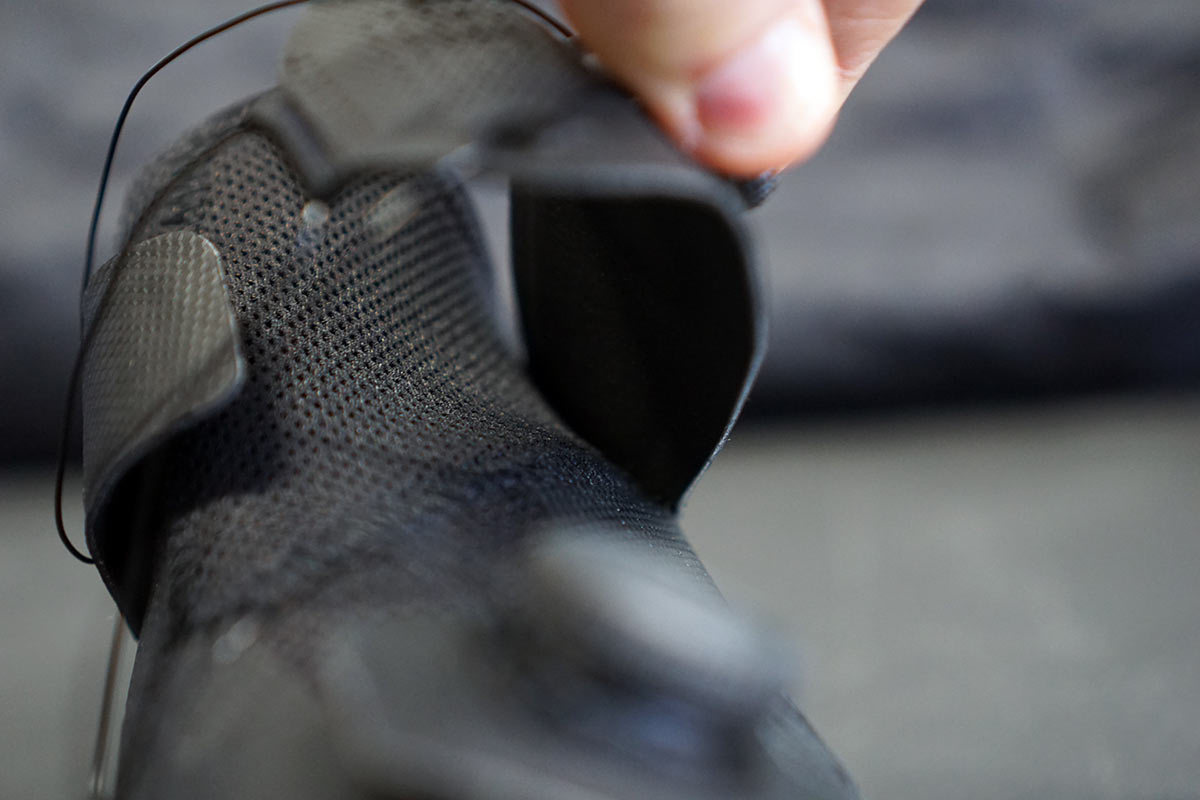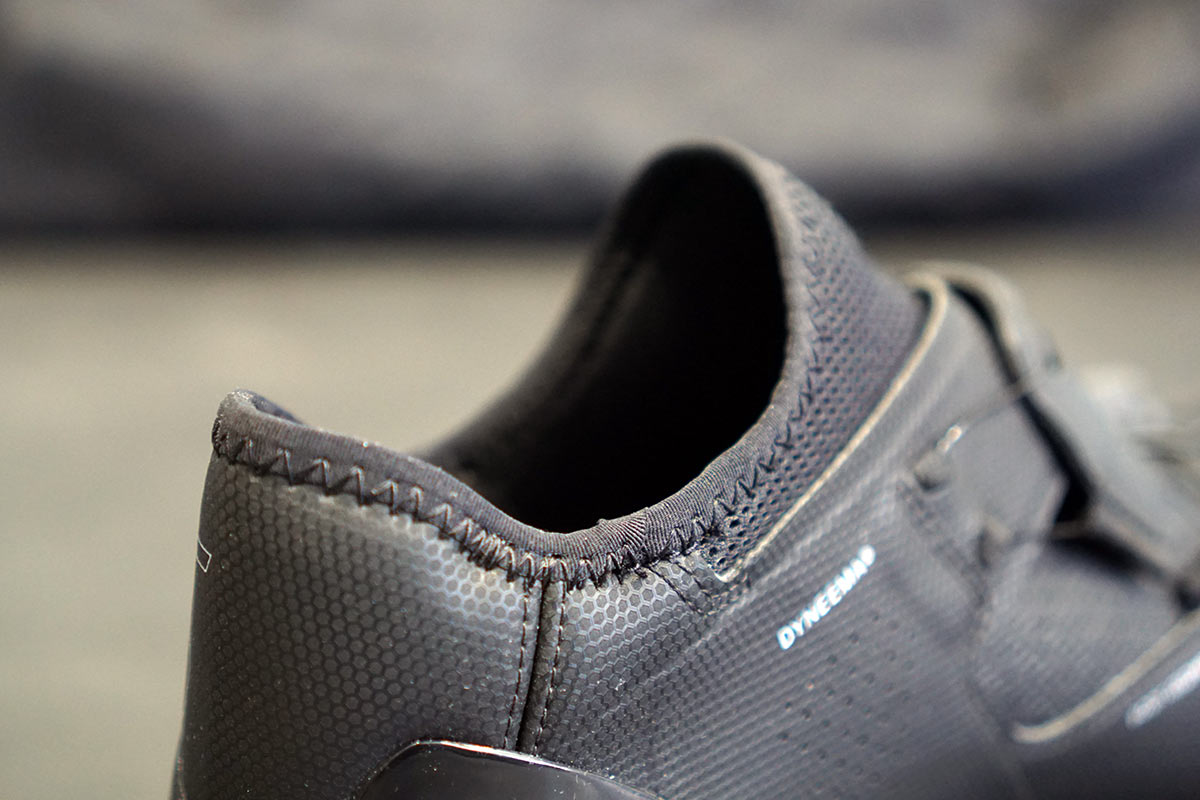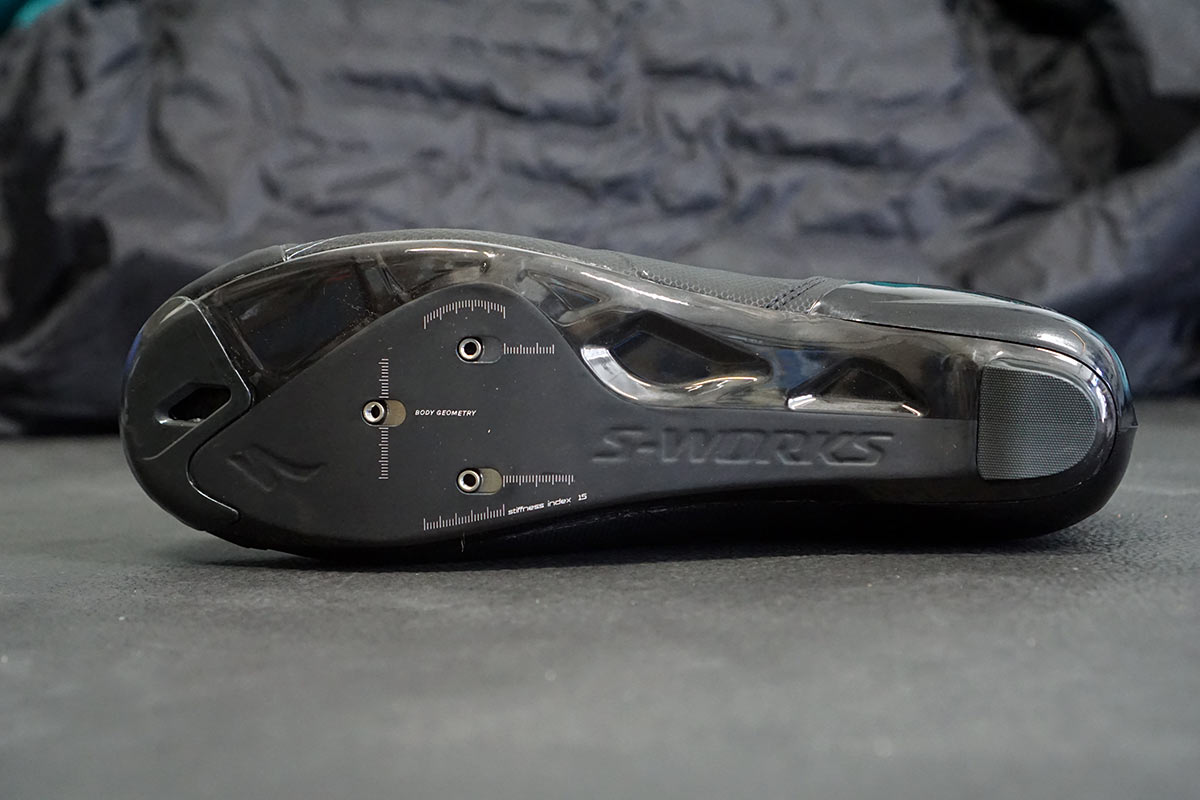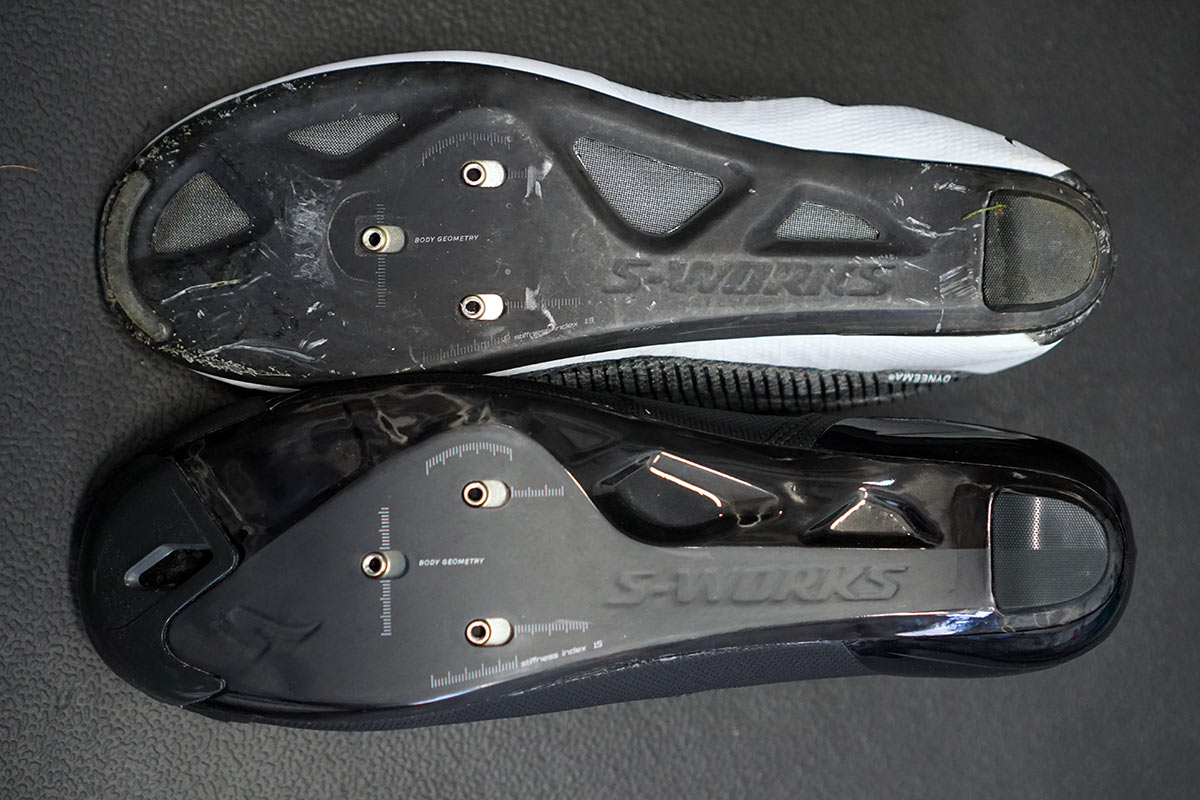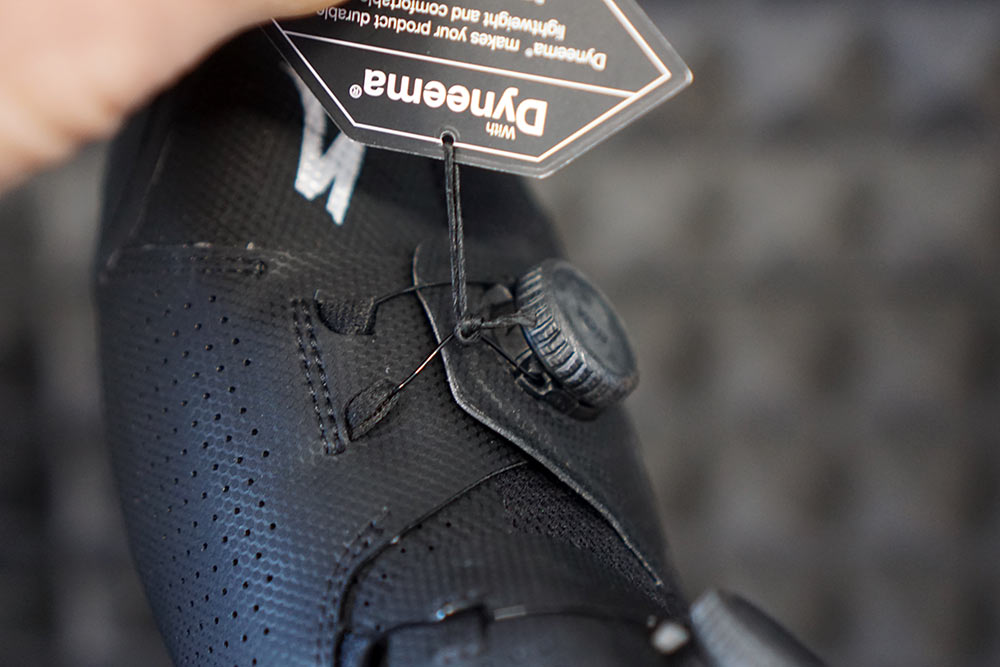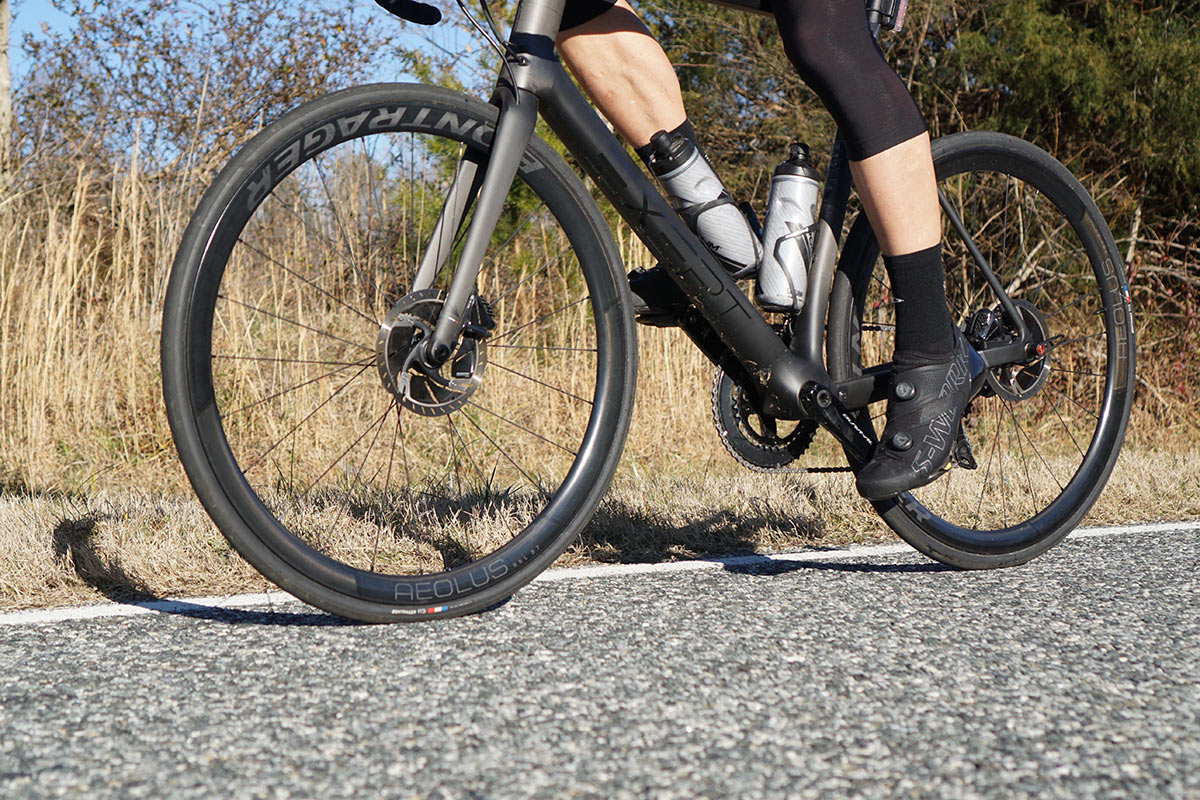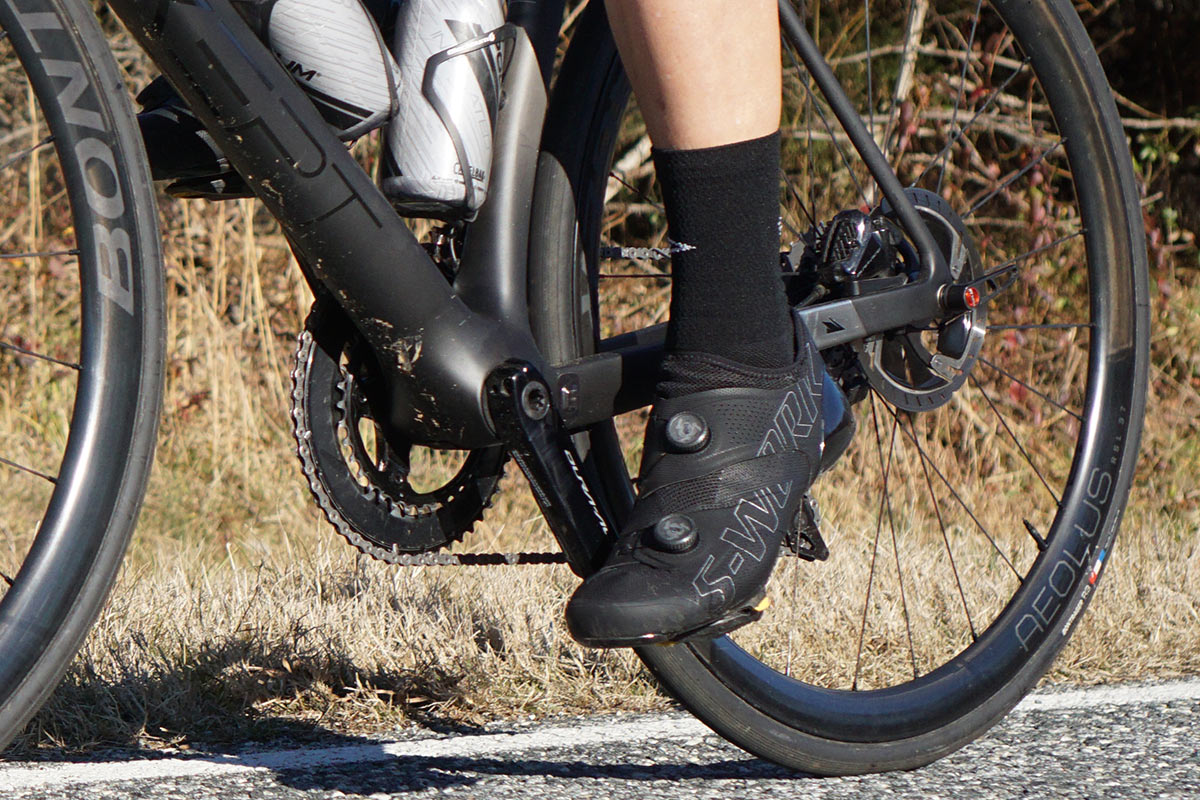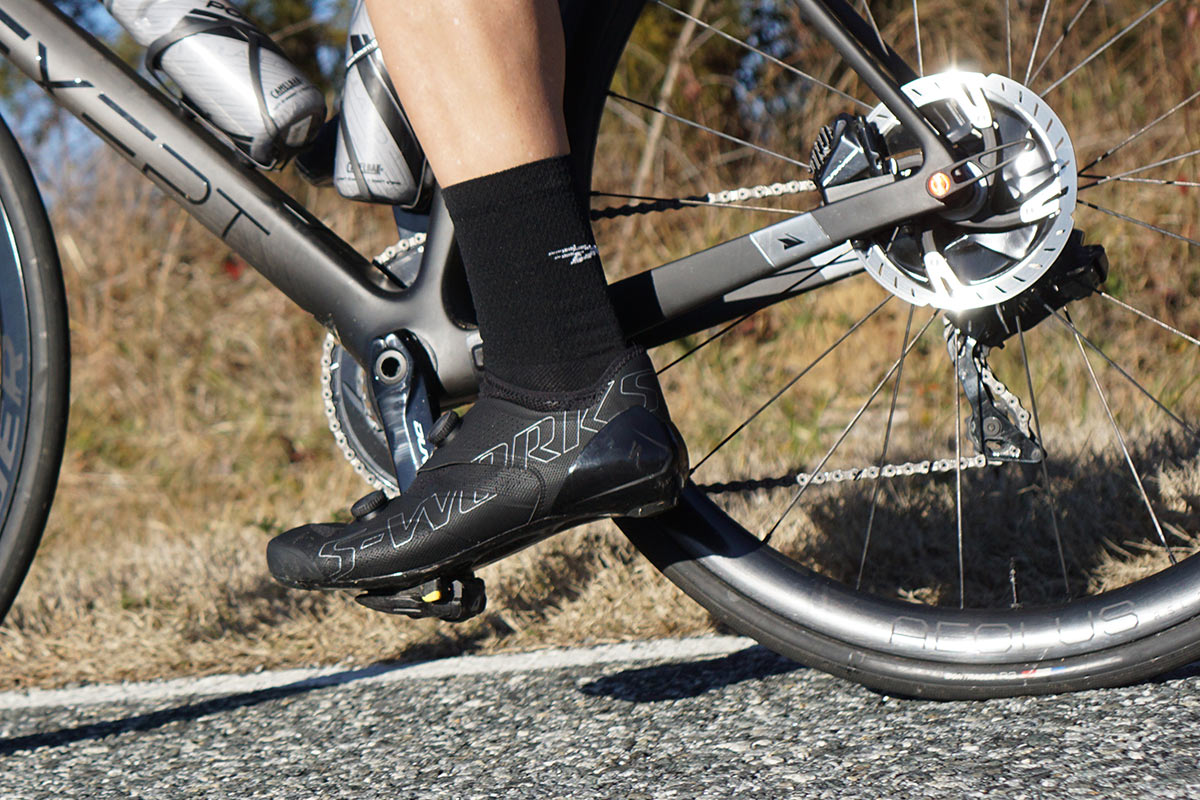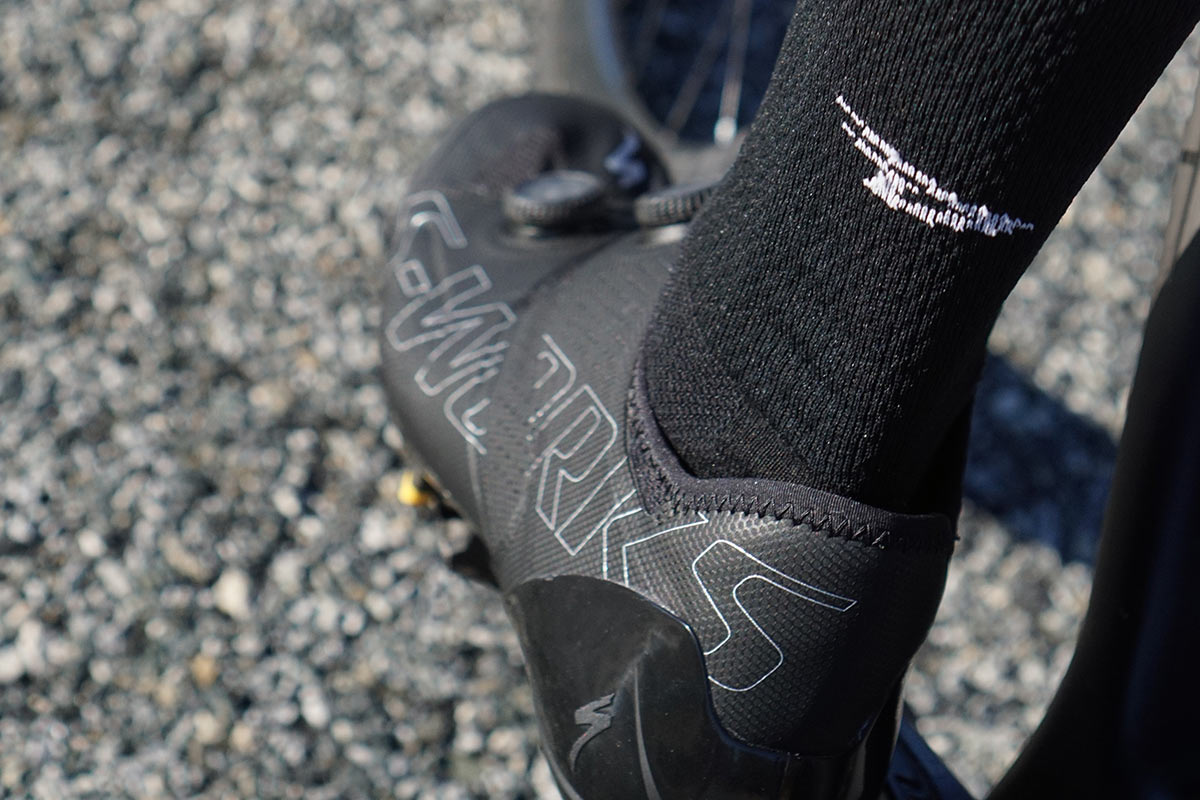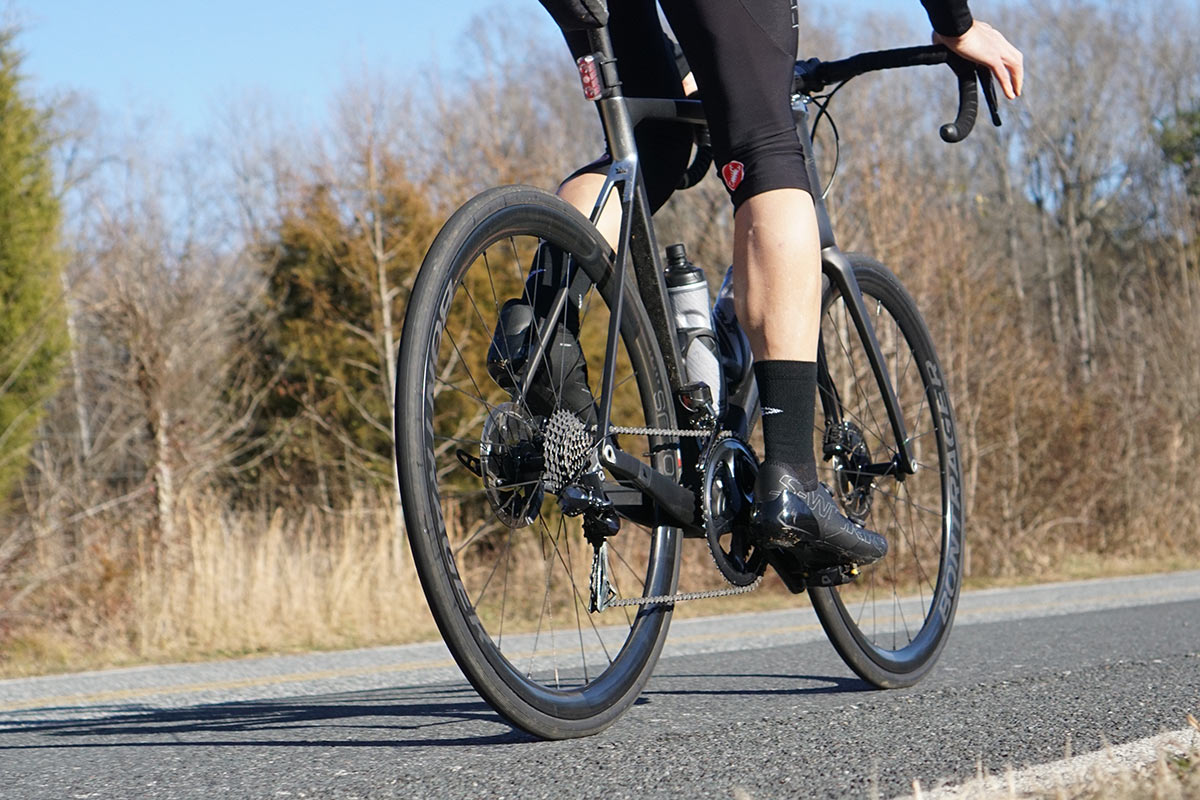if you had to guess what Specialized intended when promoting a shoe that makes you 1% faster in a sprint while also being comfortable for the whole ride, what would you guess?
Would you think that you could ratchet them down tight, but they’d still be comfy?
Makes sense, right?
Yeah, that’s what I thought, too.
But then I tried them on.
Specialized has a habit of going big…big ideas, big designs, and big claims. The new S-Works Ares doesn’t diverge from that ethos, offering a new upper design claiming to make a rider 1% faster.
How? By capturing the foot securely for all-out standing sprints, yet remaining ultra comfortable over the long miles before arriving at the lead out and finish line. But do the claims stand up to reality on the bike? Let’s find out…
A close-up look at the S-Works Ares shoes
First, let’s take a closer look at the design. Up top are two BOA Li2 dials, which ratchet in both directions so we can fine tune the fit. It’s a synthetic, non-stretch upper material on the outside, with perforations for venting across most of the side surfaces.
The inner side uses two loops to triangulate the BOA cable and pull in multiple directions. This seats the foot down, and back against the heel cup.
The upper wraps over itself in big, flat sections, which spread the load across more of your upper foot. The goal was to eliminate pressure points and hot spots, and they succeeded in that.
The stock insoles are basic, but include their Metatarsal Button to subtly spread the toe bones out and splay your feet a bit. I like this feature and wish more running and hiking shoe brands would do something similar. Replacement insoles with more arch support are available separately.
A single small front vent on the bottom channels air to the perforations on the insole to bring fresh air inside the shoe. There is no exit port, though.
Under the Synthetic/TPU/Dyneema uppers is a soft, sock-like wrap that runs all the way around the foot. There’s no tongue, it’s a single piece, so it doesn’t slide off to the side.
It also doesn’t stretch nearly as much as you’d think. Regular cycling socks slide in just fine, but my DeFeet wool socks took a bit more effort to slide into the opening. A shoe horn might be helpful depending on sock material or thickness.
The soft material wraps all the way around the edge. The heel cup is solid without being uncomfortably stiff. A plastic surround on the bottom maintains structure, and overall it provided great security without digging into my foot.
A bottom view shows just how wide and boxy the toe box is, with a nearly flat front section.
The titanium cleat mount nuts are fixed, they don’t slide inside those slots, but you can flip them to move the threaded hole to the rear. This, along with the adjustment range on your cleats, provides ample range of adjustment.
The Ares uses a similar overall last and carbon sole design as their other top shoes, albeit with slight differences in the structural shaping. Shown above is the EXOS on top, and the Ares on bottom.
When you unbox them, just be sure not to accidentally cut the wrong string when removing that Dyneema tag…it’s looped around the BOA cable, and if you’re not paying attention, it’d be easy to cut that by accident.
Specialized S-Works Ares actual weights
Specialized claims a 220g average weight for a size 42. My size 47 shoes came in at 293g and 291g. These weights are similar to the top level road shoes from many other brands, which (for better or worse) are also up around the $400 price point these days.
OK, so how’d they ride?
They’re great, once I figured them out.
The Ares shoes fit great. If you’re used to Specialized’s cycling shoes, these will feel familiar.
But, assuming you (like me) thought the idea was to twist those BOAs into a snug, fortress-like grip of your foot, you might not like them. That’s how I started out, but over a few rides, I gradually figured out that’s not how these shoes work.
Most any good shoe with a stiff carbon sole will put the power to the pedals on the down stroke. With the Ares, Specialized wanted to solve for powerful riders who also pull on the upstroke, particularly during an all-out sprint.
We can debate how powerful I am some other time, but I do tend to pull through my pedal stroke. And in sprints and fierce intervals, I drive my legs up just as hard as I mash them down.
With many shoes, ratcheting them down tightly is the go-to pre-sprint solution, followed by a release for normal riding. I certainly prefer to ride with my shoes on the loose, comfortable side most of the time, but can feel my feet shift during different effort levels, which is distracting at best and uncomfortable at worst.
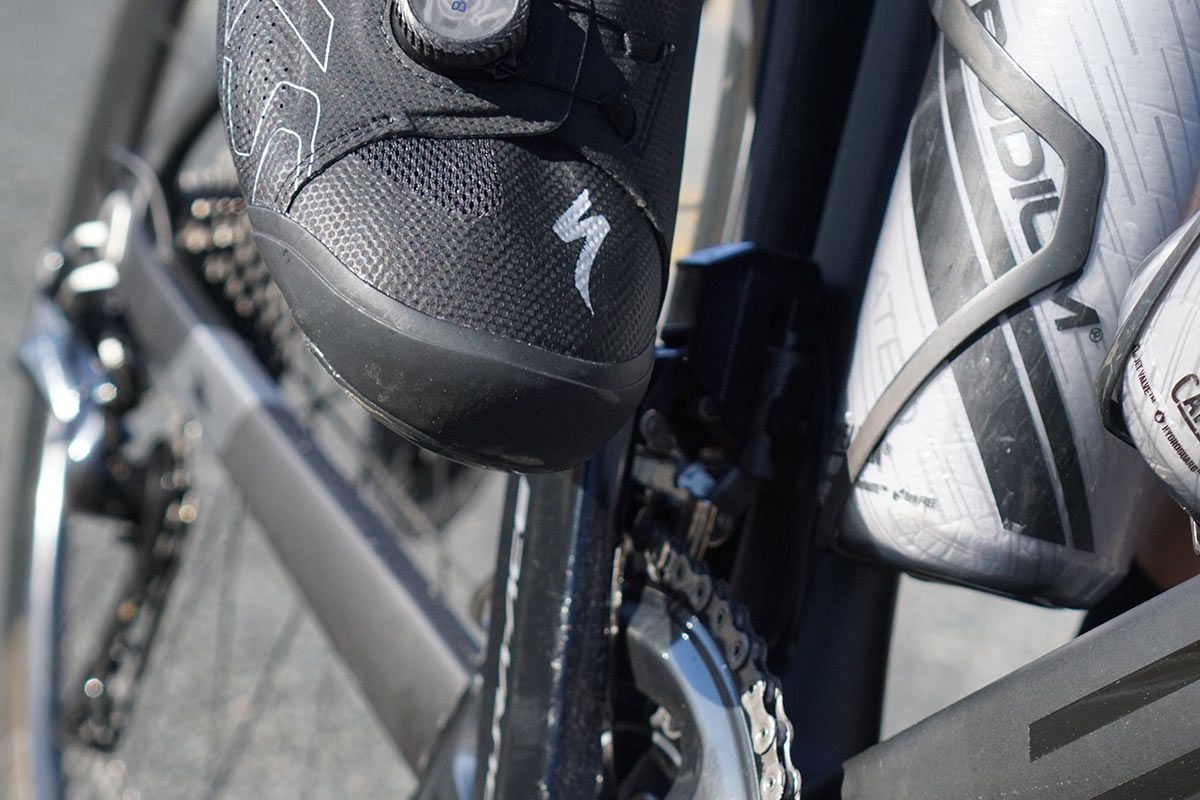
And this is where the Ares’ design shines. Thanks to the broad swaths of unstretchable synthetic uppers cradling around a soft, padded sock-like liner, I can keep them comfortably loose while they keep my feet sprint-ably secure.
It just took me a lot of miles to figure this out. I tried tightening them more, but that caused the bunching in the front.
I loosened the front and tightened the top, but that restricted blood flow to my toes. Which wasn’t immediately obvious, because it never felt tight, it just was tight.
Finally, I decided to loosen both of them up until the BOA cables were taut by One. Single. Click.
As in, one click looser and there’d be slack in the cable. And this was the sweet spot. Totally comfortable, totally secure.
Which is odd…
…because, normally, if a shoe felt this “loose”, I’d think it wasn’t tight enough.
Yet, I could sprint, pull, push, hammer, or just cruise along at various cadences, and it all felt right. And that, I think, is the magic of this design. My feet stayed planted, and I didn’t have to make periodic micro toe-scrunch adustments to stay comfortable like I do in a lot of other shoes.
Other things you should know
The sock-like liner is nice, and there are no hard edges that dug into my ankles, which can be an issue (even on some of Specialized’s other shoes, as well as other brands) that use lightweight-but-stiff structures and materials to hold a shoe’s shape.
Scoll back up a couple of photos…note the slight bunching occurring under the front dial and flap. The toe box is big, so if you have narrow feet, chances are you’ll end up needing to cinch the front end really tight, which will cause bunching.
I have normally proportioned, healthy (and large, I wear a US13 / EU47) feet, and I still got a bit of bunching when tightening the front down to a “normal” level…which was basically my indication that I needed to back off a bit.
They may not look overly ventilated, but my test rides have been in the mid-50º’s (F) and one ride ended a little late. Temps dropped into the 40º’s and my feet started feeling the chill. Airflow is adequate, and I suspect they’d make a great three-season shoe, with covers helping out in cooler climes.
The toe has a nice bumper plate that turns into a slight tread section underneath. That should help prevent long term wear that could otherwise force them into early retirement. Combined with the replaceable heel tread, they’re about as walkable as a high end road bike shoe could be.
Which is good when your ride finishes somewhere other than home:
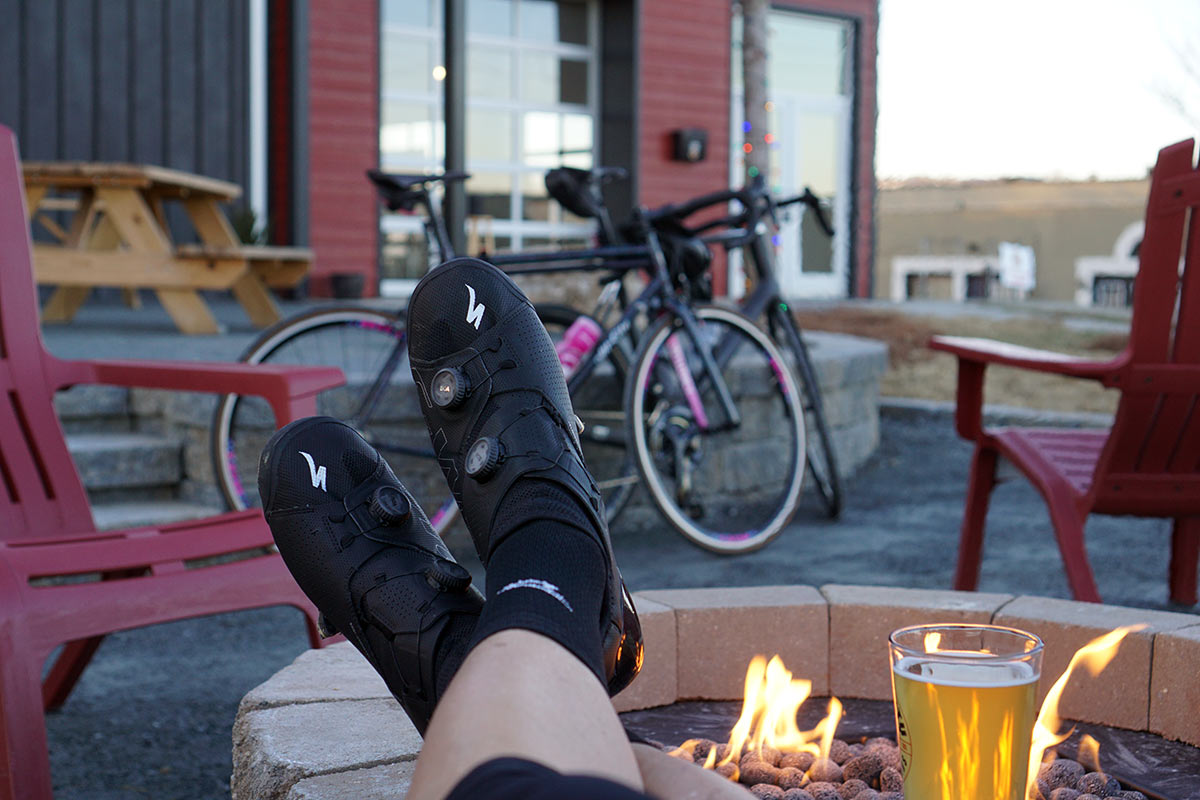
Should you buy them?
If you’ve been struggling to balance retention with comfort, these might solve your problem. If you’re a fan of Specialized’s shoes and just want something a little roomier feeling and comfortable, then yes. Or you like to sprint but hate tight shoes, go for it.
Personally, I could see this design translating very well to a gravel shoe, too. The roomy upper, solid retention, and closed cuff check all the boxes for dirt road riding and racing. I could also see this upper design doing quite well for a wider range of riders at lower price points, so I’m hoping they take all the R&D for the S-Works level and bring it down to Pro and Expert options soon.
